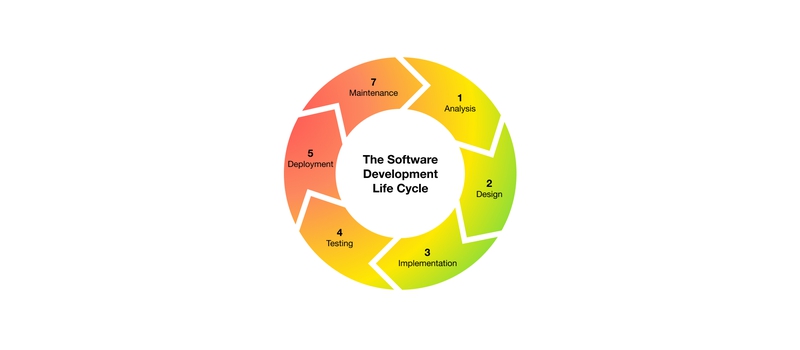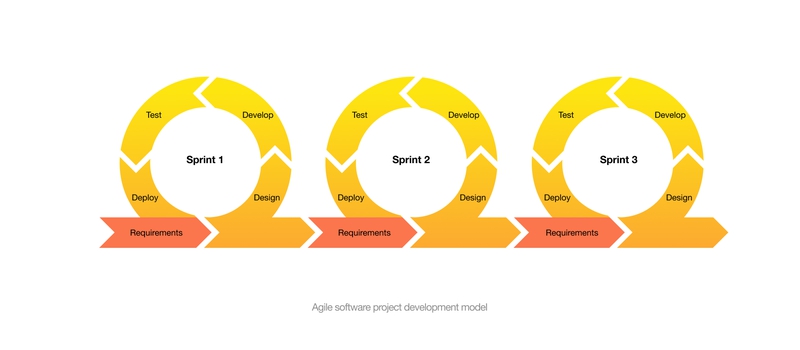The main goal of any software project is to support the implementation of your idea throughout the whole software development lifecycle. But is it possible to develop a software product if you have nothing but an idea?
Translating your business idea to a software solution
Even if you have nothing but an idea, it is possible to create a high-quality fully-featured software solution.
We have prepared detailed step-by-step guidance on how we implement business ideas using Agile methodology and a customer-centric approach.
Step 1: Discovery phase
At this stage, we are immersed in your business challenge to have a deep understanding of the context, make and analyze software solution hypotheses.
We determine goals to achieve during the development, specify business tasks, gather basic project requirements, create mockups, so on. All these activities help us to prioritize tasks and gather the right team of specialists that will help you implement your idea throughout the whole software development lifecycle.
During this phase, all received information is processed to prepare project documents, architecture outline, and backlog for one or two first sprints of the project.
Step 2: Estimation
At this stage, we make a project estimation that can include a plan of activities, budget, and timeline. When creating an estimation of your project, our IT specialists take into account all possible risks, conditions, stages, and other details. It is a great way to see how the development process will look like and clarify details according to your needs.
Step 3: Signing the Contract
When the preliminary requirements are agreed upon, we sign a contract. Before the start of your project, you can also conclude a non-disclosure agreement. It is concluded by two parties for mutual exchange of materials, knowledge, or other information with the restriction of access to it to third parties.
Step 4: Project Development
We start the development of your project within the terms specified in the contract. Software development in Agile is subdivided into iterations and sprints, usually lasting 2-4 weeks. It gives the ability to review a single development cycle and respond to the arisen issues on time, increasing the quality of your product.
Usually, SDLC includes 6 stages: analysis, design, implementation, testing, deployment, and maintenance.

- Analysis
After signing the contract, our team analyzes and validates the collected data and communicates with stakeholders to get more detailed information for the first iterations. All these requirements are prioritized and specified in Software Requirement Specification (SRS). This way, we effectively manage all the responsibilities within project development.At this stage, a business analyst specifies risks and requirements, as well as offers options for optimizing the development process. Thanks to the iterative process, you get an accurate requirement specification and gradually improve the quality of the final result.This process takes place in the format of a dialogue, where stakeholders’ engagement from both sides is important. - Design
In the beginning, UX and UI specialists are engaged in studying the behavior of users. Then they build a human-centered design considering specifications of your target audience, app purpose, technologies used, and platform selected. It helps them to create interface prototypes and user interaction models to develop a convenient design for users of any level. - Software Development
At this stage, engineers write code in the chosen programming language using the best software development practices and methodologies. We always make sure code meets software requirements, conforms to stakeholders’ needs, and much more.Developers can also perform unit testing to detect potential technical problems as early as possible during the development phase. - Software Testing
Testing a software product is one of the most important stages in the development process. It is followed by checking the system’s performance, identifying and fixing bugs until the product reaches the required quality standards and meets your business goals.Thanks to manual and automation testing, QA engineers provide stable work of software and user satisfaction. Our team easily identifies and fix bugs, the existence of which can spoil your reputation, reduce your revenue, and increase hours of development time. - Delivery
When the product is tested and ready for deployment, it is released to the market. The Agile approach makes it possible to use the continuous delivery and deployment model to make improvements, introduce new features, and ensuring excellent performance.

Step 5: Win-win cooperation
Our customer-centric approach helps you implement your idea and build a long-lasting partnership, delivering value to your business.
You know the destination. We know the way.
Exposit Team has successfully completed over 275 projects, meeting the primary needs and goals of our clients. Our experience is confirmed in many positive client reviews on Clutch and DesignRush.
Contact us if you have an idea for a software development project and want to translate your desires into a strong software solution.






